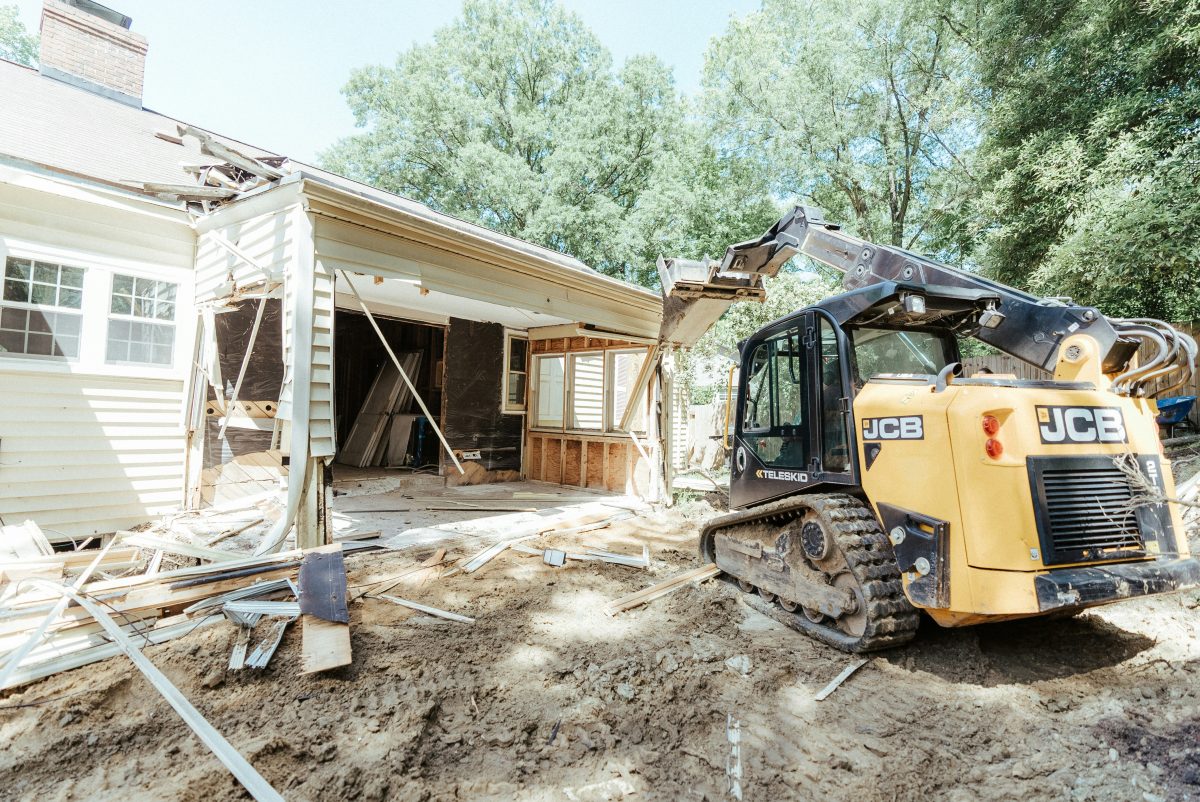Last Updated on October 30, 2025 by teamobn
Many homeowners see moving out during a remodel as an unnecessary expense and inconvenience. At first glance, staying home while contractors work may seem like a smart way to save money. However, this decision often leads to bigger problems later.
Living on-site might appear more affordable compared to paying for temporary housing. But the disruptions, delays, and hidden costs that come with staying in a construction zone can quickly outweigh the initial savings. In many situations, moving out temporarily helps protect both your budget and your peace of mind.
This article explains why the idea of staying put during a renovation is often misunderstood. It also shares practical reasons why relocating makes sense and offers helpful tips to make the process smoother. If you are planning a major remodel in 2025, these insights can help you avoid stress and unexpected expenses.
Contents
What Most Homeowners Underestimate About Living On-Site
Starting a home renovation while living in your space is nowhere near as simple as most homeowners think. The obvious hassles are just the beginning. You’ll face many unexpected challenges that only show up after work begins.
The emotional toll of daily disruption
Nobody talks much about the psychological effects of living in renovation chaos, but you can’t ignore them. Your home fills with strangers and mess. Daily routines fall apart. These create a perfect storm of stress. Homeowners who stay put often end up mentally drained. The whole process brings anxiety about money and the endless mess.
Life in a “Renovation in Process” home means telling yourself “this too shall pass.” That gets harder to believe as days turn into weeks and months. Making decisions becomes exhausting. Each change affects something else. This creates an endless chain of choices you need to make over and over.
Most underestimated factor: Saying goodbye to familiar spaces while juggling renovation details can stir up surprising feelings of loss and instability.
How noise and dust affect your routine
Construction noise isn’t just annoying – it can harm your health. People exposed to it often develop mental and physical problems, including stress and hearing damage. The noise also ruins sleep and focus. It cuts into your work and raises both anxiety and blood pressure.
Dust causes just as many problems. Even with lots of cleaning:
- Your home gets dusty and dirty, especially during demolition
- Construction dust irritates your eyes, nose, and throat
- You might develop serious breathing problems like asthma and COPD from long exposure
Family members who react badly to poor air quality suffer even more. They need constant cleaning just to make spaces livable.
Why Moving Out During Renovation Is Often the Smarter Choice
People often think staying home during renovation is the best choice. Moving out temporarily can actually save you time, money, and headaches. Many homeowners avoid this option because it seems inconvenient. The benefits usually make up for the short-term hassle.
Faster project timelines
Your contractors can work freely throughout the property when you move out during renovation. Construction teams work better without having to plan around your family’s daily routine or living space. They can employ the entire house as needed, which speeds up the project by a lot.
Here’s a practical example: renovating two bathrooms at once becomes much easier with an empty house. Contractors can work on both spaces simultaneously and cut that part of the timeline in half. You’ll get back to your newly renovated home much faster than if you had stayed put.
Lower cleanup and protection costs
Moving out can reduce your total project costs, as long as temporary housing doesn’t eat up the savings. Contractors working around occupied spaces must spend extra time and resources on:
- Daily cleanup beyond standard construction tidying
- Installing extensive dust barriers and air quality controls
- Creating secure pathways to protect occupants from construction hazards
- Implementing additional safety measures for children and pets
These protective measures add labor hours that don’t directly improve your renovation but still show up on your final bill. The time spent cleaning up each day takes away from actual construction progress—time you ended up paying for.
Fewer delays from scheduling conflicts
The biggest advantage comes from eliminating scheduling conflicts. Staying in your home forces contractors to work around your daily activities, which creates inefficiencies and longer timelines. Empty houses give contractors the freedom to schedule specialized subcontractors at the best times, instead of working around your morning routine or evening plans.
Living at home usually requires a room-by-room approach to keep spaces livable. An empty house allows for a more efficient whole-house method. These scheduling advantages help your project run smoothly with fewer expensive delays when you choose to relocate during renovation.
How to Plan a Temporary Move Without Losing Your Mind
Moving out during renovations needs careful planning. Your success depends on the details – when you’ll move, where you’ll stay, and how you’ll coordinate your temporary home.
Choosing the right time to move out
Your renovation’s scope should guide your moving timeline. Staying in your home might work for smaller, single-room projects. All the same, you’ll just need to relocate for whole-home remodels or projects that affect all bathrooms at once. A clear project timeline from your contractor helps you make moving arrangements. You’ll know the best time to leave once you understand when the most disruptive work happens.
The first step is to figure out if your renovation allows a phased approach. You might move out only during critical demolition phases, or you may need to stay away throughout the project.
Large remodels often take longer than expected; studies show whole-home renovations typically span four to six months before you can move back in.
Budgeting for short-term housing
Short-term housing costs run between 25% to 50% of your usual monthly housing expenses. The final cost depends on your choice of location and type of housing. A detailed budget that covers all potential costs becomes essential before you move during a remodel.
Here are your main options:
- Short-term rental properties – These are economical for longer renovations and often offer better rates for extended stays
- Extended-stay hotels – Daily rates hover around $150, with discounts when you book consecutive nights
- Staying with family/friends – This saves the most money but can be tough for long projects
Budget-conscious homeowners often mix these options. You could take a short vacation during demolition and then stay with family or in a rental afterward.
If your remodel is happening in Maryland, working with experienced Baltimore movers can help streamline your temporary relocation. Local professionals often understand the urgency and coordination required during home renovations and can offer flexible moving dates to match your project timeline.
If your remodel is happening in Maryland, working with an experienced Baltimore mover can help streamline your temporary relocation. Local professionals understand the coordination needed during renovations and offer services tailored to short-distance, time-sensitive moves.
Coordinating with your contractor
Weekly check-ins with your renovation team work best. These updates help track progress and let you adjust your temporary housing plans. Good communication helps you prepare for possible timeline changes or an early return home.
Whatever housing option you pick, make sure your contractor can reach you quickly for urgent decisions. Project delays often happen when homeowners don’t respond fast enough, and you end up staying away from home longer.
Storage and Safety: Two Things You Can’t Ignore
Moving out during a renovation takes more than just packing a suitcase. Many homeowners overlook two major factors until it’s too late—how to store their belongings and how to protect their health. Both can become costly mistakes if ignored.
When it comes to your possessions, you have several reliable options:
- Create a “safe room” on-site to shield your furniture and valuables from dust and debris. This works best for smaller renovations but still exposes your items to some dust and limits the space available for contractors.
- Use a portable storage unit on your property. This gives you easy access to your things while keeping them out of the way of construction. It’s a convenient and cost-effective middle-ground solution.
- Choose an off-site, climate-controlled storage facility. Although more expensive, this option offers the highest level of protection from damage and theft. It also gives your renovation crew more space to work efficiently.
- Ask friends or family to store a few essential items. This option can help reduce storage costs and give you quick access to what you need most without cluttering the job site or your temporary home.
Planning ahead for storage and safety helps you avoid delays, extra costs, and health concerns. A recent guide by Zip Moving and Storage shares useful storage tips for homeowners preparing to move during renovations, including how to keep items packed and organized during the transition.
Conclusion
Moving out during a home renovation may feel inconvenient at first, but for many homeowners, it turns out to be the better choice. Staying in the house while construction is underway often leads to unexpected stress, delays, and added expenses that can quickly outweigh any savings.
Relocating gives your contractors the freedom to work more efficiently. It also helps protect your belongings, maintain your well-being, and keep the project on track. With the right planning, you can choose a temporary housing and storage solution that fits your needs and budget.
If you are preparing for a major remodel in 2025, take the time to consider all the benefits of moving out. It can make the experience easier, faster, and much more manageable from start to finish.






